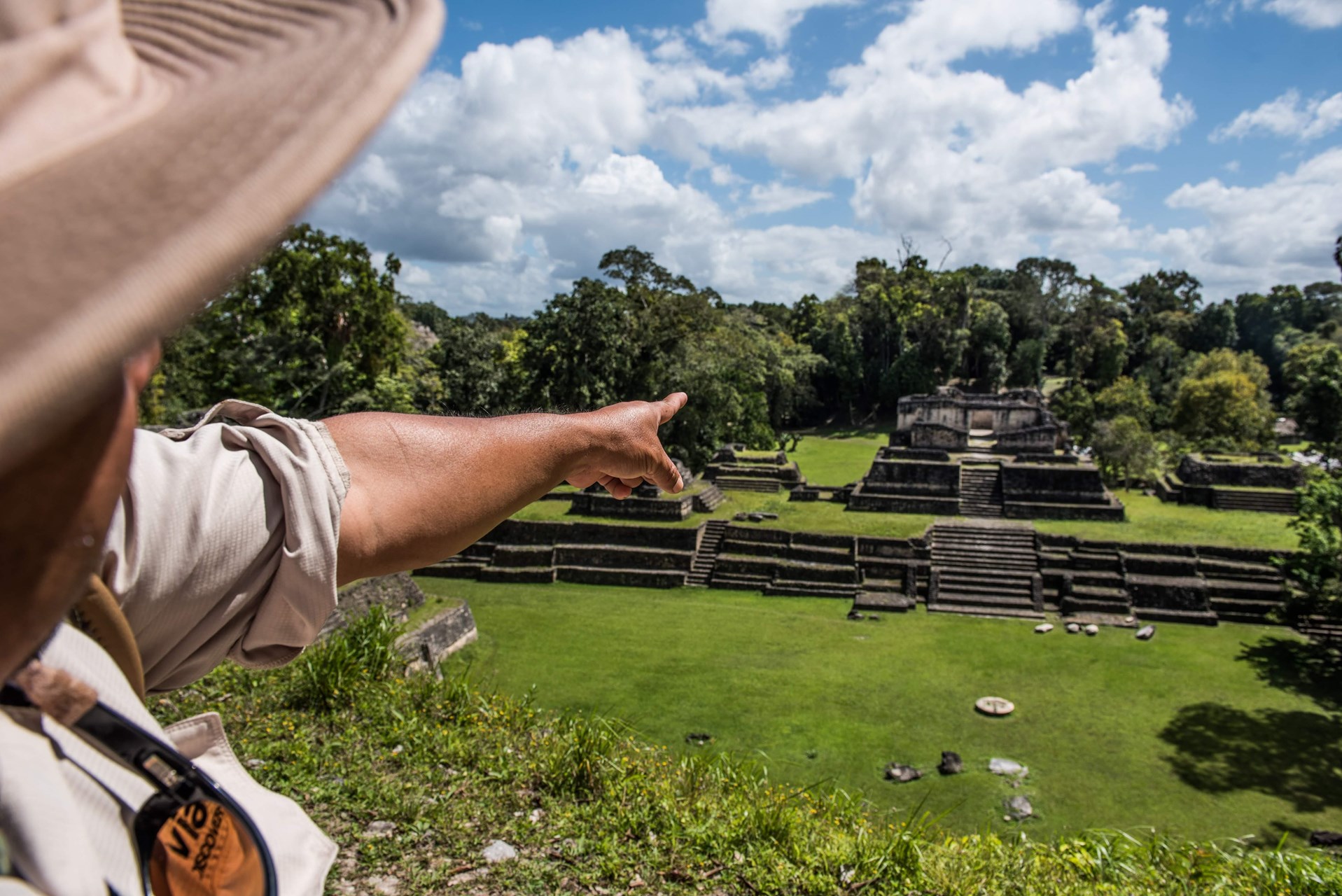With more than 570 species of birds thriving in its varied ecosystems, there’s no better place to go bird watching than in Belize. This gem of a country provides wonderful, year-round experiences for great birding experiences. From casual onlookers to veteran ornithologists, birders of every level delight in the sight of macaws, toucans, trogons, hummingbirds, storks, parrots, raptors, and other species commonly seen throughout Belize. Here are four of the best destinations to go bird watching in Belize:
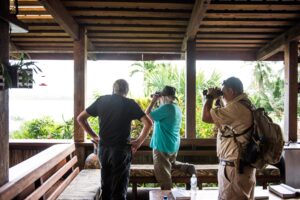
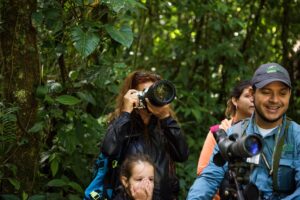
1.Crooked Tree Wildlife Sanctuary, a playground for waterfowl
The Crooked Tree Wildlife Sanctuary is the first wildlife sanctuary designated by the government of Belize in 1984. Featuring a mosaic of pristine wetland and terrestrial habitats, it stands out as one of Belize’s best birding destinations, especially for waterfowl. More than 300 species of birds nest in the lagoons, creeks, logwood swamps, broadleaf forest, and pine savanna that comprises Crooked Tree.
Located roughly midway between Belize City and Orange Walk, the sanctuary encompasses 66 square kilometers (25.6 square miles) of wilderness. It also protects a wide range of species such as the northern jacana, the sungrebe, the yellow-headed parrot, and the roseate spoonbill. During the dry season (February through May), many resident and migratory birds find refuge in the sanctuary’s lagoons.
2.Cockscomb Basin Wildlife Sanctuary, a jaguar reserve famous for birds
As a reservoir for biodiversity, the Cockscomb Basin Wildlife Sanctuary protects hundreds of species, well beyond its rich diversity of neo-tropical birds. Plants with exotic leaves and flowers, colorful insects, furry mammals, scaly reptiles, and wide-eyed amphibians also thrive in the sanctuary’s ecosystems.
Renowned for its bird populations, Cockscomb provides habitat for nearly 300 avian species, including the scarlet macaw, the great curassow, keel-billed toucan, agami heron, peregrine falcon, and several eagle varieties. Located in southern Belize, about one hour drive from Placencia, the sanctuary was established in the mid-1980s to protect its jaguar population and remains as the world’s only jaguar reserve.
Although an estimated 200 jaguars thrive at Cockscomb, don’t expect to see anything more than their tracks, these masters of stealth remain well hidden from human view. Other cats, such as the puma, ocelot, jaguarundi, and margay, can sometimes be spotted in the rugged terrain. Over the years, the sanctuary has expanded from 14.5 square kilometers (5.6 square miles) to 518 square kilometers (200 square miles), offering spectacular waterfalls, mountain views, and nature trails. Connected to a nearby nature reserve through a protected corridor, the Cockscomb is part of a 1,000 square kilometers (390 square miles) refuge.
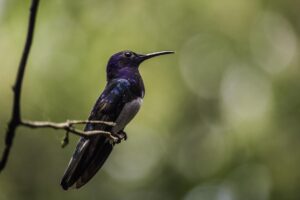
3.Macal River, where three toucan species (and hundreds more) roost
The verdant forests overlooking the Macal River in western Belize are one of the rare places where you may see all three toucan species in a single morning. The area boasts nearly 400 species of birds, including the olive-throated parakeet, lineated and pale-bill woodpeckers, trogons, hummingbirds, king vultures, Purple-crowned fairies, tanagers, woodcreepers, flycatchers, and many others.
Listen for the gentle “hoot hoot” of the blue-crowned motmot paying homage to Kinich Ahua, the Mayan sun god. With over 300 meters (1,000 feet) of elevation changes, the region lends itself to viewing an astonishing range of birds in distinct habitats. On the crystal river and its shaded banks, herons, egrets, and cormorants thrive, as do colorful butterflies, turtles, and iguanas. The high forest canopy provides the realm of raptors, such as hawks, eagles, and falcons.
4. Caracol Ruins, for a birding expedition amongst Mayan temples
Combine bird-watching and Mayan mystique at the ruins of Caracol, the vastest archaeological site in Belize. Surrounded by the Chiquibul National Park in western Belize, Caracol stands out for birders as one of the few areas to observe the keel-billed motmot, a rare and endangered species.
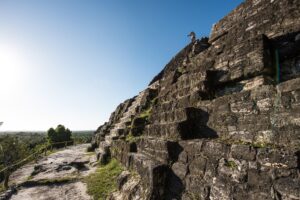
The scarlet macaw, ocellated turkey, crested guan, and the great curassow also inhabit Caracol and its surroundings, as do colorful toucans, trogons, tityrus (masked and black-crowned varieties), squirrel cuckoos, puffbirds, warblers, and more. Climb the massive Caana pyramid, rising 43 meters (140 feet) above the jungle floor, for a breathtaking 360-degree view of the treetop habitat. Keep an eye out for the rare harpy eagle and other raptors cruising above the forest canopy.
In addition to the avian species, a variety of forest-dwelling mammals, including five species of cats, live in the area and are occasionally seen. Other notable wildlife includes the endangered red brocket deer, Yucatan black howler monkey, and red spider monkey. Follow in the footsteps of the Maya elite as you take in the fauna throughout Caracol, which in its heyday covered more than 200 square kilometers (77 square miles) with over 100,000 residents.

